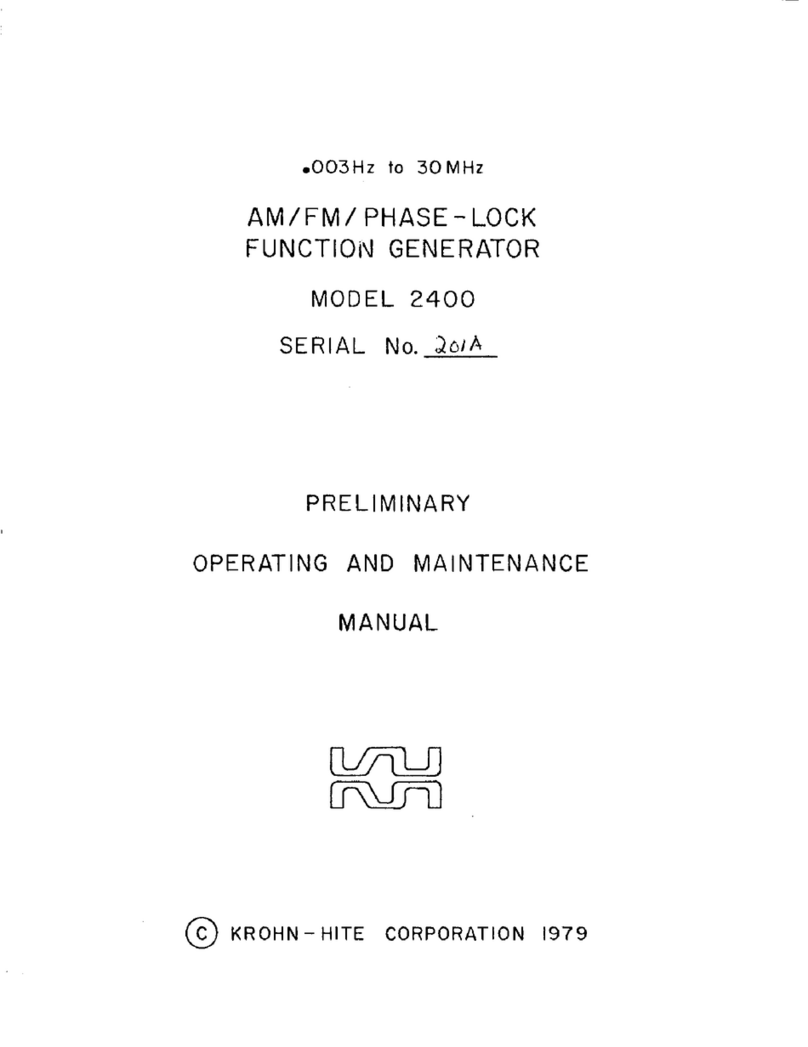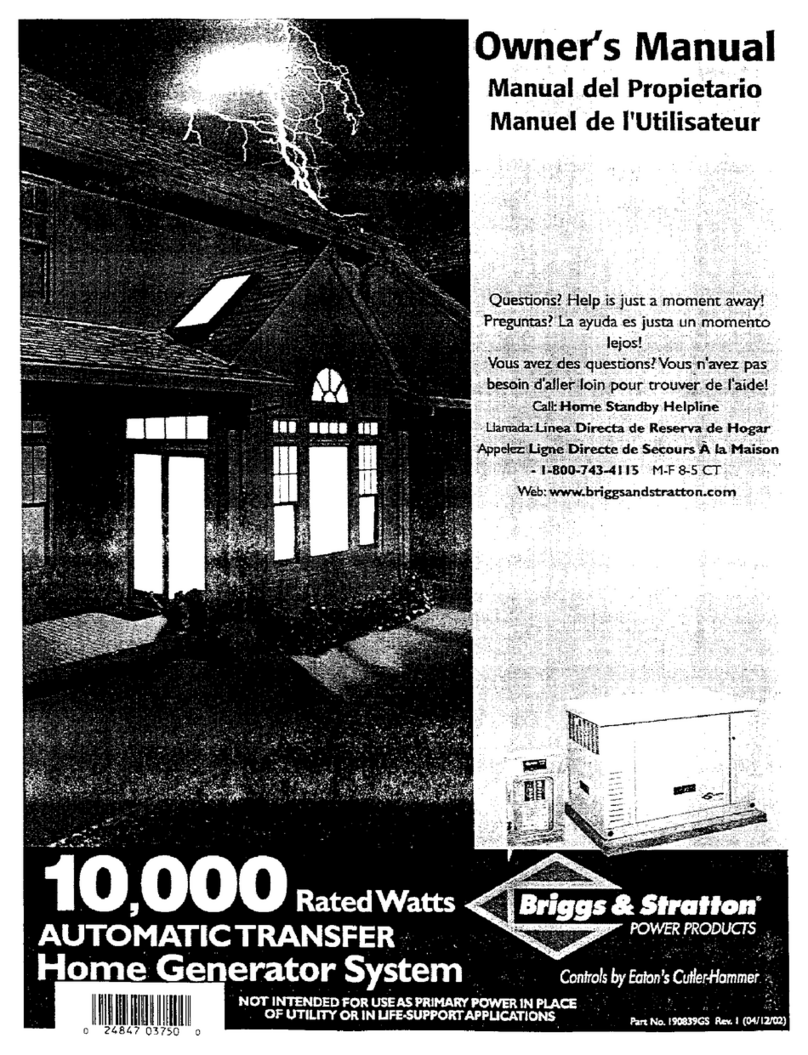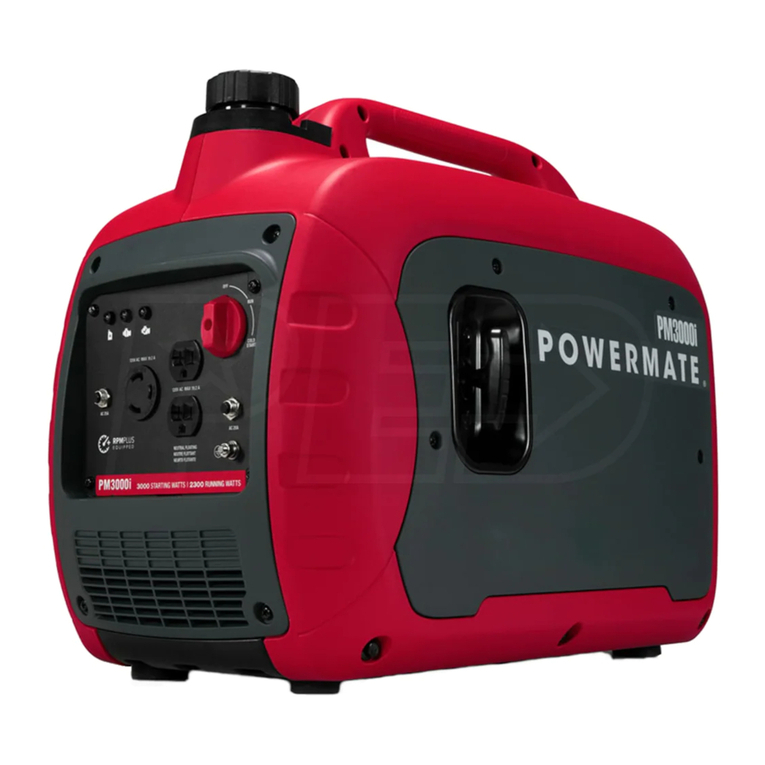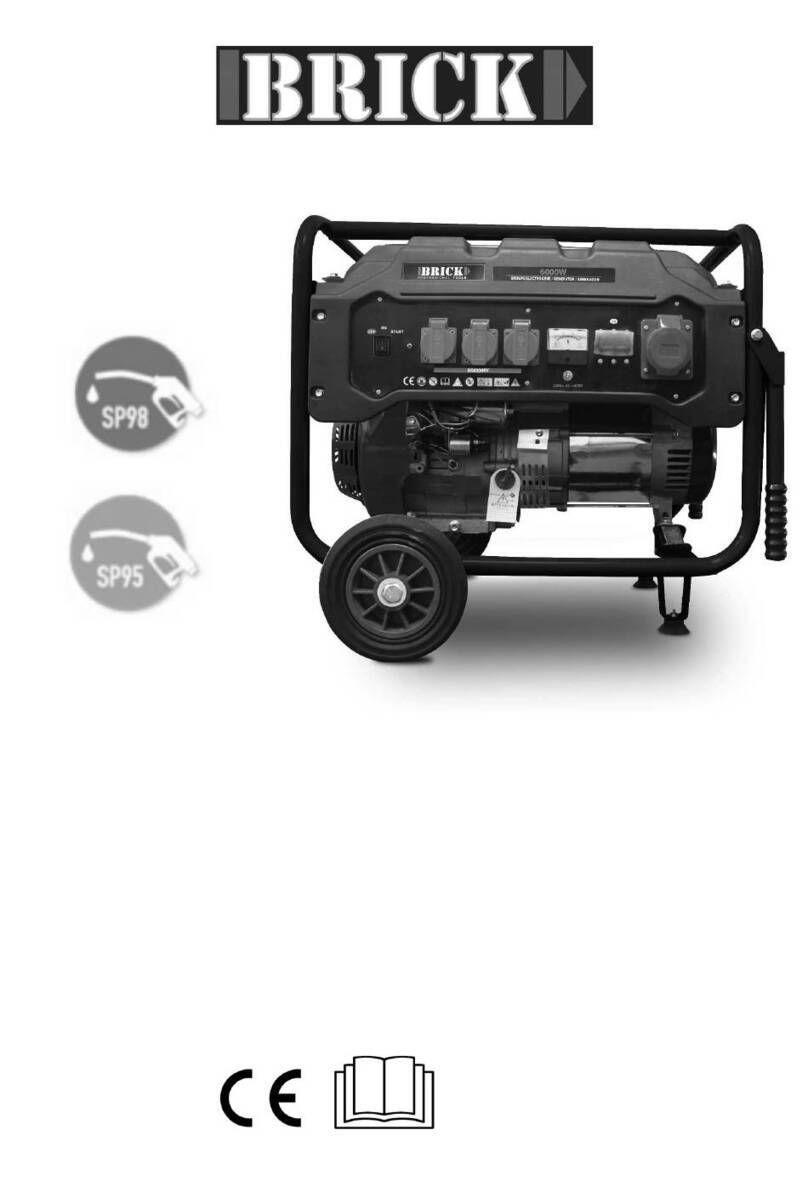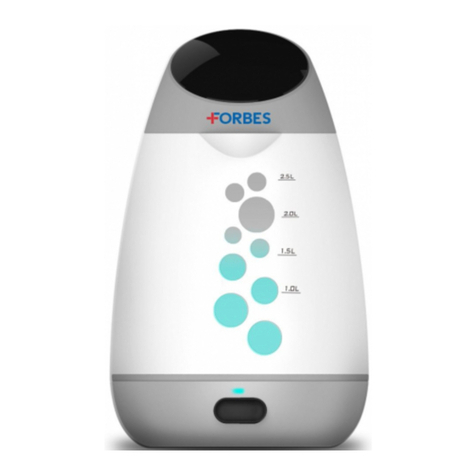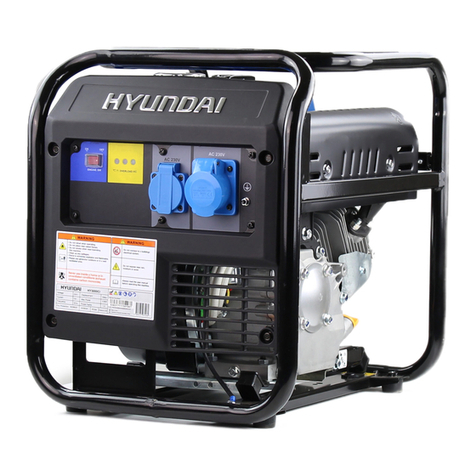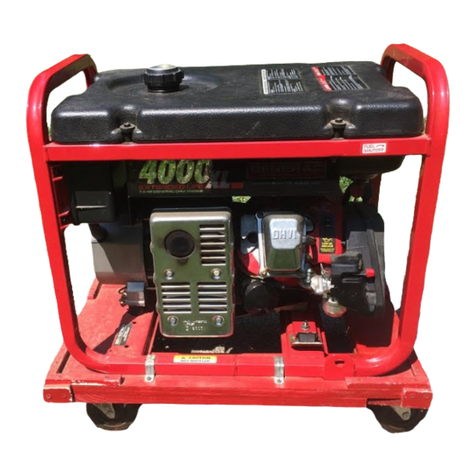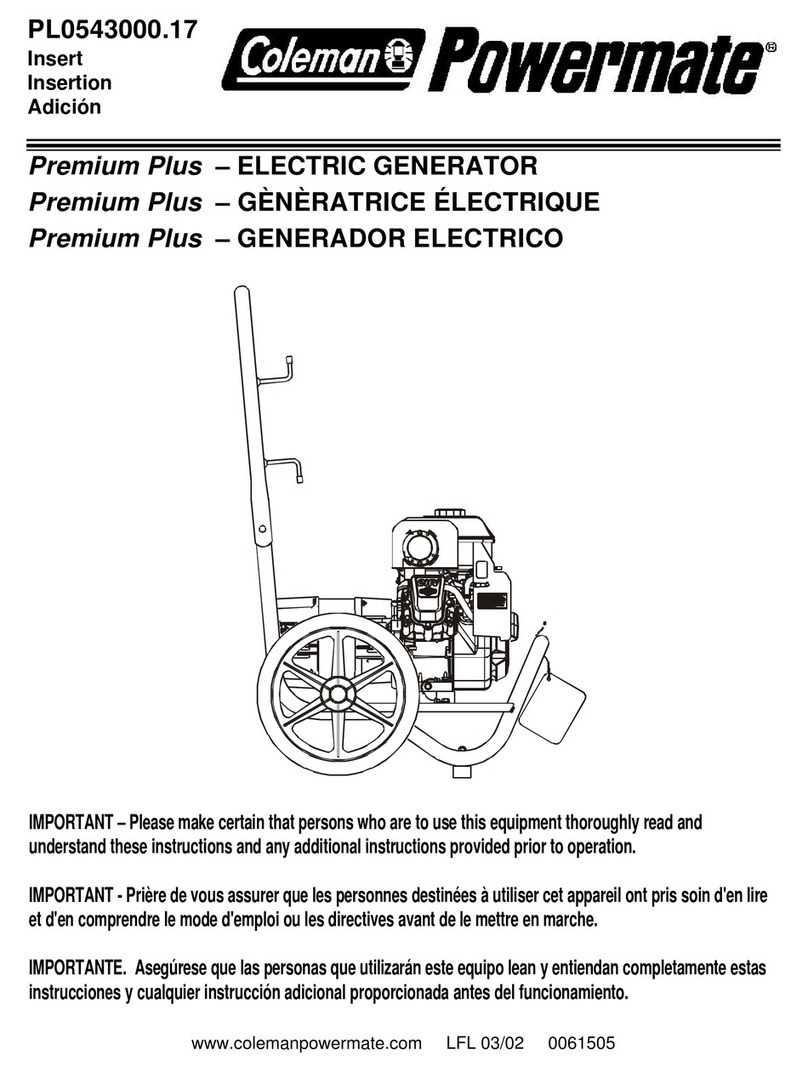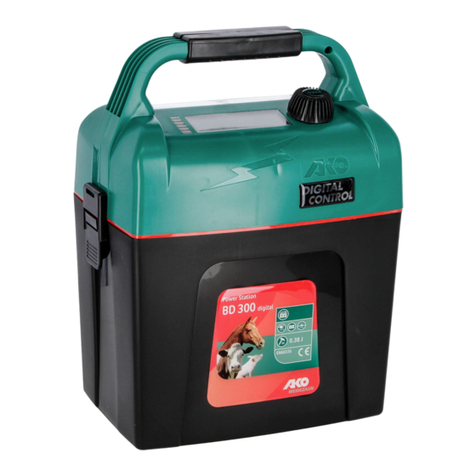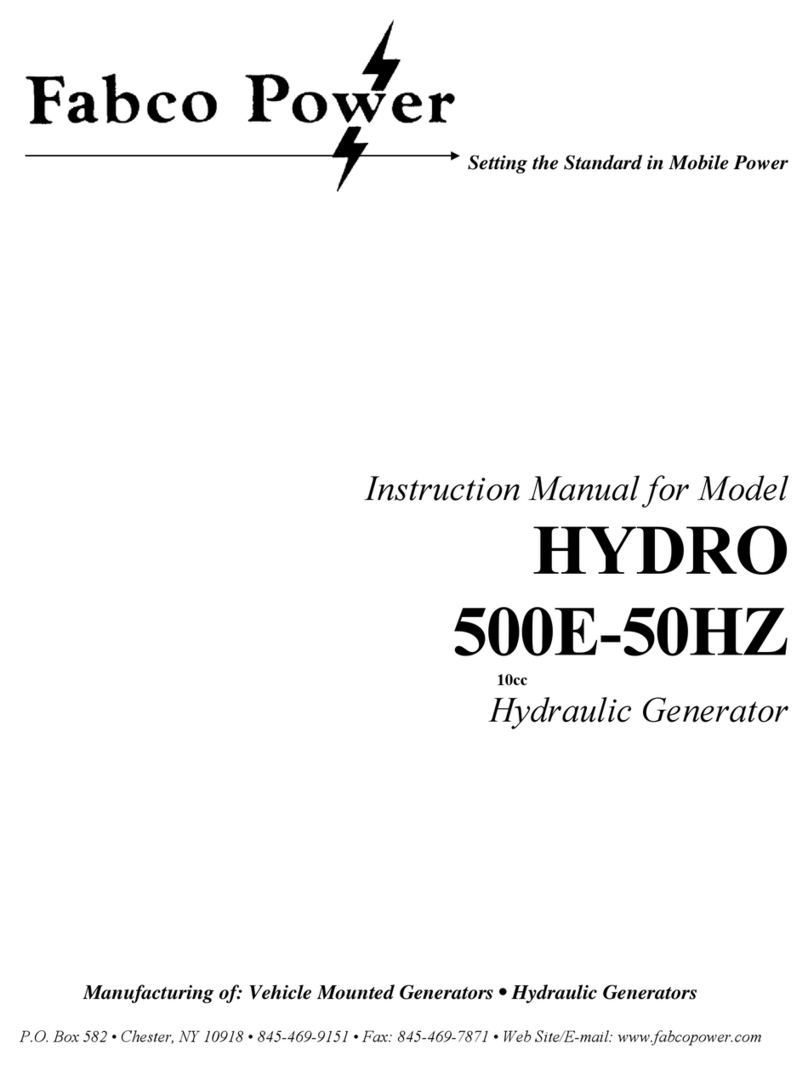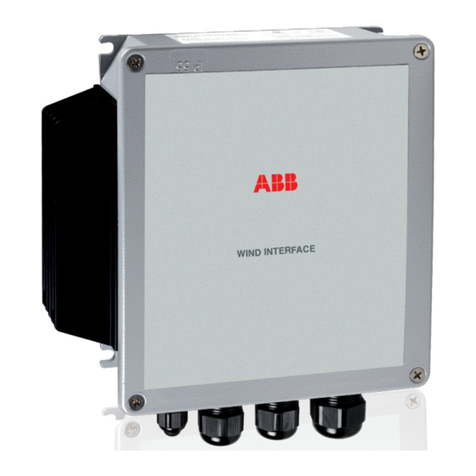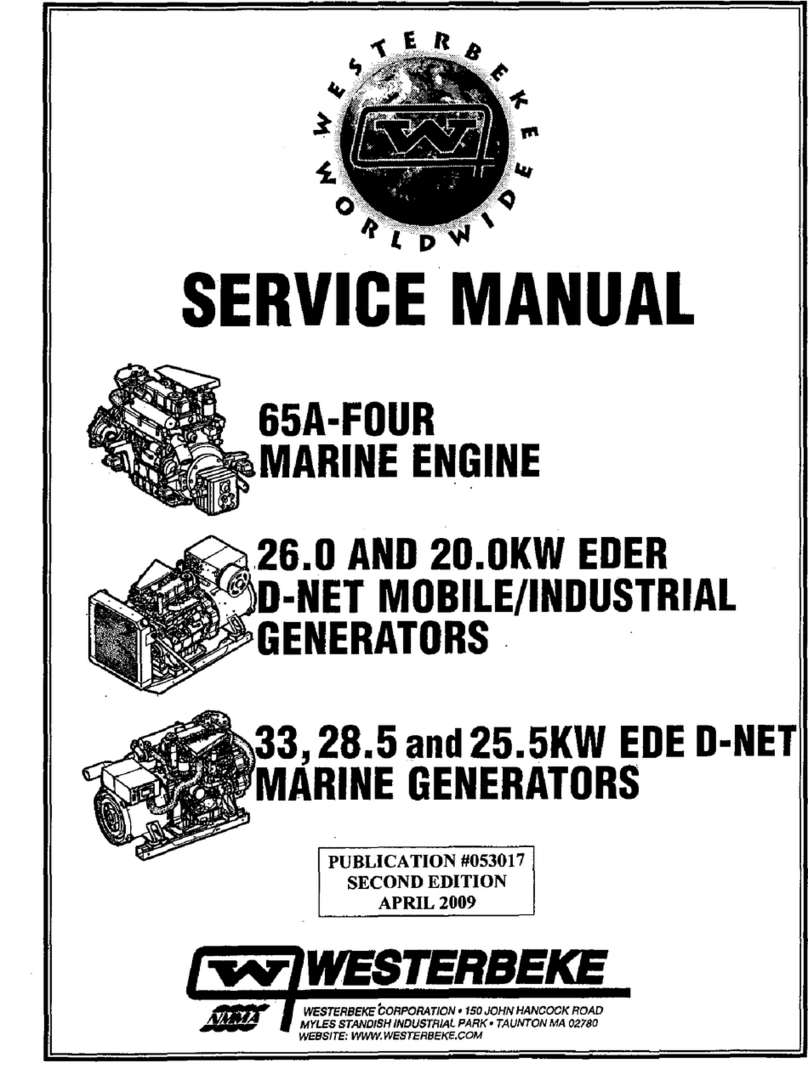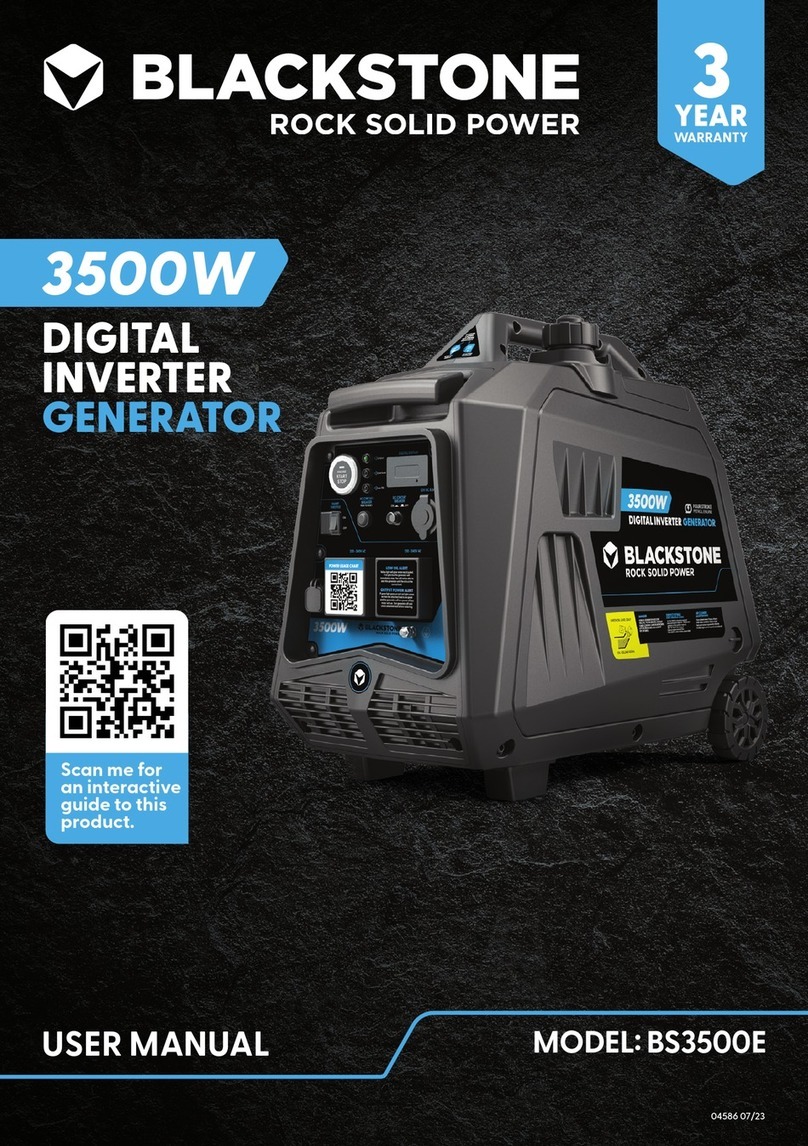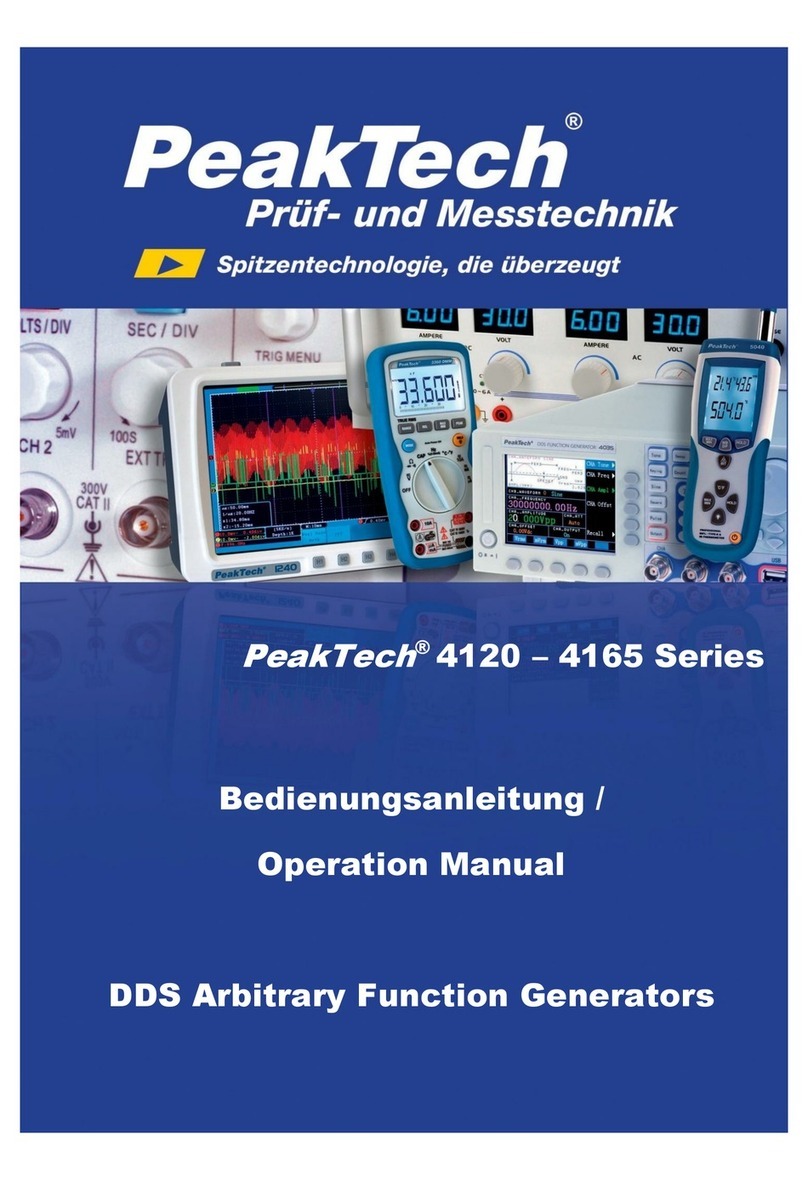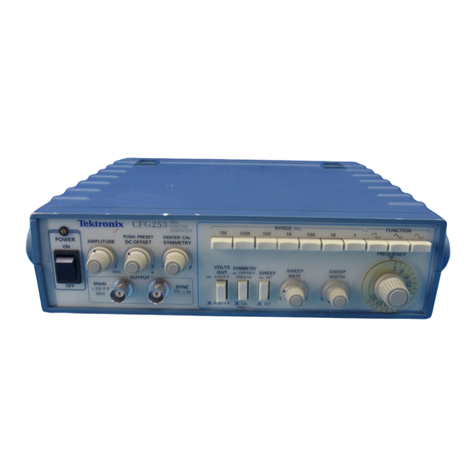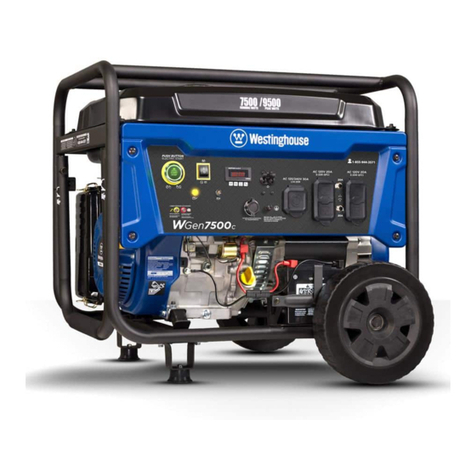Krohn-Hite S700 Operating instructions

0.002Hz
TO
2MHz
FUNCTION
GENERATOR
MODEL
S700
SERIAL
NO.


0.002Hz
TO
2MHz
FUNCTION
GENERATOR
MODEL
5/700
SERIAL
NO.
OPERATING
AND
MAINTENANCE
MANUAL
W/L)
|
INSU
KROHN-HITE
CORPORATION
AVON
INDUSTRIAL
PARK
/
BODWELL
STREET/ AVON,
MASS.
02322
(C)
1976
KROHN-HITE
CORPORATION.


Contents
ee
a
CONTENTS
Section
Page
]
GENERAL
DESCRIPTION
......2-
22
-
ee
ee
ees
eee
l
2
OPERATION
......
eee
eee
re
ee
4
3
INCOMING
ACCEPTANCE
AND
PERFORMANCE
CHECK
1.
www
wee
ttt
ee
we
te
tt
tt
et
et
eee
6
4
CIRCUIT
DESCRIPTION
.........-.2022
2c
eee
vevcrees
8
5
MAINTENANCE.........
cee
me
etree
ew
we
ee
ee
eee
13
6
CALIBRATION
....
2...
eee eee ere
ee
eee
ee
eee
.
19
ILLUSTRATIONS
Figure
Page
1
Model
5700
Function
Generator
....
0...
e
eee
ee
eee
eee
ii
2
Simplified
Schematic
Diagram
........22
cece
ee
evees
8
3
Triangle
Generator
.........
a
a
a
re
‘
9
4
Square
Wave
Generator
..
2...
eee
cece
reer
ee
eerevevens
9
5
Sine
Wave
Shaper
.....-.
eee
vere
evr
reer
vere
veee
10
6
Plus
Output
Amplifier
.......
02.
2
eee
ee
eee
weer
evens
10
7
Minus
Output
Amplifier
.......
ww
we
ee
eee
ewe
wwe
1]
8
Power
Supply
.
2...
ce
veer
eee
e
rrr
vn
er
eee
rrr
eres
eves
1]
APPENDIX
Schematic
Diagram,
PC
Board
Component
Layout,
inside
Parts
List
2.
cece
ew
eee
eee
weer
wee
eee
eee
eee
eves
back
cover
TABLE
Table
Page
]
Troubleshooting
Chart
.
2...
ee
ee
eee ene
ee
ee ee
enna
13

Model
5700
Function
Generator
Figure
1.
Model
5700
Function
Generator
-
pute

Section
1
-
General
Description
SECTION
1
GENERAL
DESCRIPTION
1.1
INTRODUCTION
The
Krohn-Hite
Model
5700
Function
Generator
provides
sine,
square
or
triangle
waveforms,
over
the
frequency
range
of
0.002
Hz
to
2
MHz.
The
frequency
control
dial
is
calibrated
in
Hertz
from
0.2
to
200,
permitting
1000:1
tuning.
The
5700
provides
a
50
ohm
single
ended,
15
volts
p-p
open
circuit
output,
and
simultaneously,
a
balanced
600
ohm,
30
volts
p-p
open
circuit
output.
Both
outputs
are
controlled
by
a
two
position
attenuator,
calibrated
in
40
dB
steps,
with
a
separate
infinite
resolu-
tion
vernier.
An
additional
1
volt
p-p
auxiliary
square
wave
output
is
also
provided
on
the
5700.
|
The
function
generator
is
carefully
inspected,
aged,
and
adjusted
before
shipment,
and
should
be
ready
for
operation
when
it
is
unpacked.
If
it
appears
to
have
been
damaged
in
shipment,
make
a
claim
with
the
carrier
and
notify
Krohn-Hite
im-
mediately.
|
:
|
1.2
SPECIFICATIONS
Waveforms
Sine,
square,
triangle.
Frequency
Range
0.002
Hz
to
2
MHz
in
4
ranges.
Frequency
Control
Single
turn
dial
calibrated
logarithmically
from
0.2
to
200
in
Hertz,
and
a 4
position
multiplier
providing
a
1000:1
coverage
in
each
multiplier
position.
BAND
MULTIPLIER
FREQUENCY-RANGE
(Hz)
]
0.01
0.002
-
2
2
]
0.2
-
200
3
100
20
-
20K
4
10K
2K
-
2M
Frequency
Accuracy
+3%
at
four
dial
calibration
settings
of
0.2,
5,
50,
200.
+15%
maximum
at
other
settings.

Model
5700
Function
Generator
Frequency
Stability
10
minutes
0.05%
24
hours
0.25%
Vs
line
0.01%
for
10%
line
change
Vs
temperature
0.05%/°C
(-10°C
to
50°C)
from
0.002
Hz
to
100
KHz.
Time
Symmetry
Sine,
square,
triangle,
99%
from
0.002
Hz
to
100
KHz.
Main
Output
Waveforms:
Sine,
square,
triangle.
Output
Characteristics:
50
ohm
output:
15
volts
p-p
open
circuit;
7.5
volts
p-p across
50
ohms.
300
ohm
outputs:
15
volts
p-p
open
circuit;
7.5
volts
p-p
across
300
ohms.
600
ohm
balanced
output:
30
volts
p-p
open
circuit;
15
volts
p-p
across
600
ohms;
balance greater
than
60
dB
to
20
KHz.
Isolation:
Can
be
floated
up
to
+500
volts
peak
between
outputs
and
instrument
case,
Amplitude
Stability
(maximum
amplitude):
10
minutes
0.02%
24
hours
0.1%
Amplitude
Control:
Two
position
attenuator,
calibrated
in
40
dB
steps,
with
separate
infinite
vernier.
Attenuator
accuracy
is
0.2
dB.
Minimum
output
is
less
than
3
millivolts.
DC
Components:
All
waveforms
are
symmetrical
about
ground
with
nominal
zero
dc
volts.
At
maximum
output,
drift
is
less
than
5
millivolts
/°C.
Drift
is
reduced
in
proportion
to
output
attenuator
setting.
Frequency
Response:
Sine
wave,
less
than
0.1
dB
from
0.002
Hz
to
200
KHz;
0.5
dB
to
2
MHz.
Sine
Wave
Distortion:
Less
than
0.5%
from
0.002
Hz
to
100
KHz;
3%
to
2
MHz.
Square
Wave:
Rise
and
fall
time
less
than
50
ns;
total
aberrations
less
than
5%
with
50
ohm
termination.
Triangle
Linearity:
Greater
than
99%
from
0.002
Hz
to
100
KHz;
95%
to
2
MHz.
DC
Offset:
0
to
£5
volts
open
circuit.
Stability
5
millivolts
/°C,
reduced
in
proportion
to
attenuator
setting.
Maximum
peak
signal
plus
dc
offset
is
+7.
5
volts.
Auxiliary
Output
Fixed
1
volt
p-p
square
wave.
Impedance
200
ohms.
Operating
Ambient
Temperature
Range
-10°C
to
50°C.

section
|
-
General
Description
Controls
Front
panel
contains
frequency
dial,
frequency
range
multiplier,
amplitude
attenuator
and
vernier,
main
output
waveform
selector,
dc
offset,
power
switch.
Rear
panel
contains
line
switch,
symmetry
adjust,
dc
level
adjustments.
Terminals
Front
panel
only,
BNC
connector
for
the
50
ohm
output.
Binding
posts
for
the
600
ohm
balanced
output
and
auxiliary
output.
Power
Requirements
107-127
or
214-254,
single
phase,
50-400
Hz,
3.5
watts.
Dimensions
and
Weights
5
1/2"
(140
mm)
wide,
6''
(152
mm)
high,
12"
(305
mm)
long;
7
lbs.
(3.5
kg)
net,
10
lbs.
(5
kg)
shipping.

Model
5700
Function
Generator
SECTION
2
OPERATION
2.1
POWER
REQUIREMENTS
The
Model
5700
Function
Generator
may
be
used
either
with
a
107-127
or
214-254
volt,
50-400
Hz
line.
The
line
voltage
can
be
selected
by
operation
of
the
line
switch
on
the
rear
panel.
All
units
are
shipped
with
the
line
switch
in
the
117
volt
position
and
a
fuse
bag
attached
to
the
line
cord.
The
fuse
bag
contains
a
1/16
ampere
fuse.
When
234
volt
operation
is
required,
replace
the
1/8
ampere
fuse
with
the
1/16
ampere
fuse
and
switch
the
line
switch
to
the
234
volt
position.
2.2
OPERATING
CONTROLS
AND
CONNECTORS
2.2.1
Front
Panel
Controls
POWER:
A
1
position
pushbutton
switch
for
selecting
OFF-ON,
and
a
pilot
light
to
indicate
the
ON
condition.
FREQUENCY
DIAL
AND
MULTIPLIER:
Single
turn
dial,
calibrated
logarithmically
from
0.2
to
200
to
provide
1000:1
frequency
coverage
in
each
of
the
4
multiplier
switch
positions,
X0.01
to
X10K.
WAVEFORM:
3
position
pushbutton
switch
for
selecting
sine,
square
or
triangle
waveforms.
AMPLITUDE:
2
position
attenuator
switch
for
selecting
0
dB
and
-40
dB,
anda
separate
infinite
vernier
for
fine
adjustment
to
an
additional
-60
dB.
For
low
level
Signals,
the
output
should
be
properly
terminated.
DC
OFFSET:
Switch
and
potentiometer
determines
the
de
offset
of
the
50
ohm
and
600
ohm
balanced
output
signals
by
up
to
+5
volts
open
circuit.
The
dc
offset,
plus
the
ac
signal,
should
not
exceed
£7.5
volts
peak,
open
circuit,
or
clipping
will
occur.
2.2.2
Rear
Panel
Controls
LINE:
2
position
switch
for
selection
of
117
or
234
volt
operation.
SYM
ADJ:
Potentiometer
for
periodic
adjustment
of
the
waveform
symmetry.
DC
OUTPUT
LEVELS:
2
potentiometers
for
periodic
adjustment
of
the
+
and
-dc
output
levels.
2.2.3
Connectors
50
OHM:
The
selected
waveforms
appear
at
this
output.
Impedance
is
50
ohms.

Section
2
-
Operation
600
OHM
BALANCED:
The
selected
waveforms
appear
at
this
output.
Impedance
across
the
two
red
binding
posts
is
600
ohms.
Impedance
across
either
red
and
black
binding
post
is
300
ohms.
1
VOLT
P-P:
Fixed
amplitude
of
1
volt
p-p
square
wave.
Frequency
is
coincident
with
the
50
ohm
and
600
ohm
balanced
outputs.
Impedance
is
200
ohms.

Model
5700
Function
Generator
SECTION
3
INCOMING
ACCEPTANCE
AND
PERFORMANCE
CHECK
3.1
INTRODUCTION
The
following
procedure
should
be
used
to
verify
that
the
generator
is
operating
within
specifications,
both
for
incoming
inspection
and
for
routine
servicing.
Tests
must
be
made
with
all
covers
in
place
and
the
procedure
given
below
should
be
followed
in
sequence.
If
a
problem
is
encountered
in
the
procedure
that
is
given,
refer
to
Calibration,
Section
6.
3.2
EQUIPMENT
REQUIRED
(a)
Oscilloscope,
with
1
mv/cm
sensitivity
and
bandwidth
of
at
least
45
MHz,
Tektronix
Type
7403N
or
equal,
with
7B50
Time
Base
and
7A13
Differential
Comparator.
(b)
Frequency
counter,
capable
of
measuring
0.002
Hz
to
2
MHz.
(c)
Distortion
meter,
Hewlett
Packard,
Type
333A
or
equivalent.
(d)
Voltmeter,
capable
of
measuring
0
to
20
volts.
3.3
PROCEDURE
After
allowing
the
instrument
to
warm
up
for
30
minutes,
set
the
controls
to
the
following
positions:
POWER
AC
Operation
FREQUENCY
DIAL
AND
MULTIPLIER
20
X100
ATTENUATOR
O
dB,
vernier
Max.
CW
WAVEFORM
Sine
DC
OFFSET
Off
3.3.1
Waveforms
Connect
the
50
ohm
output
of
the
generator
to
the
oscilloscope.
Operate
the
Wave-
form
pushbutton
switch
in
all
positions
to
check
for
the
presence
of
all
waveforms.
Return
the
switch
to
the
sine
wave
position.
3.3.2
Attenuator
Rotate
the
Attenuator
vernier
to
the
max.
CCW
end.
The
signal
should
diminish
by
more
than
60
dB.
Rotate
the
vernier
to
the
max.
CW
end.
The
output
ampli-
tude
should
be
greater
than
15
volts
peak
to
peak.
Connect
the
oscilloscope
to
the

Section
3
-
Incoming
Acceptance
and
Performance
Check
ee
600
ohm
Balanced
output.
The
output
amplitude
should
be
greater
than
30
volts
peak
to
peak.
When
operating
the
generator
at
a
high
frequency
and
the
oscil-
loscope
is
connected
to
the
600
ohm
balanced
output,
the
oscilloscope
should
have
a
balanced
input
to
prevent
the
waveforms
from
becoming
distorted,
because
the
outputs
are
floating
from
the
chassis.
Operate
the
Attenuator
switch,
starting
at
0
dB
and
going
to
-40
dB,
reading
the
output
amplitude
with
an
acvm.
The
Attenuator
accuracy
is
+0.2
dB.
3.3.3
DC
Output
Levels
Set
the
Attenuator
switch
to
the
0
dB
position
and
the
vernier
to
the
max.
CCW
end.
Connect
the
dcvm
between
the
black
and
the
upper
600
ohm
red
binding
posts.
It
should
be
possible
to
set
the
level
to
zero
by
means
of
the
+OUTPUT
DC
LEVEL
potentiometer,
located
on
the
rear
panel.
Connect
the
dcvm
between
the
black
and
the
lower
600
ohm
red
binding
posts.
It
should
be
possible
to
set the
level
to
zero
by
means
of
the
-OUTPUT
DC
LEVEL
potentiometer,
also
located
on
the
rear
panel.
The
output
dc
levels
may
change
by
approximately
10
millivolts
when
the
Attenuator
vernier
is
rotated
to
the
CW
end.
Therefore,
it
may
be
necessary
to
readjust
the
+
and
-
OUTPUT
DC
LEVEL
potentiometers
for
zero
volts
at
the
desired
Attenuator
setting.
3.3.4
DC
Offset
With
the
Attenuator
vernier
rotated
to
the
CCW
end,
connect
the
dcvm
to
the
50
ohm
output.
Set
the
DC
Offset
switch
to
the
IN
position.
The
DC
Offset
control
should
be
capable
of
offsetting
the
signal
by
+5
volts,
open
circuit.
Set
the
switch
to
the
OFF
position.
3.3.5
Frequency
Accuracy
Set
the
Attenuator
switch
to
0
dB
position,
vernier
to
max.
CW
end.
Connect
the
frequency
counter
to
the
50
ohm
output.
The
frequency
accuracy
should
be
+3
percent
at
the
dial
settings
of
0.2,
5,
50
and
200;
+15
percent
maximum
at
other
settings.
3.3.6
Distortion
With
the
Waveform
switch
set
to
sine,
and
the
frequency
set
to
0.2
X10K,
check
the
sine
wave
distortion
using
the
distortion
meter.
Adjust
the
Symmetry
Control
on
the
rear
panel
for
a
distortion
reading
of
less
than
0.5
percent.
3.3.7
Auxiliary
1V
P-P
Connect
the
oscilloscope
to
the
1V
p-pSquare
Wave
Output.
Check
that
the
square
wave
is
present
and
is
at
least
1
volt
peak
to
peak
open
circuit.

Model
5700
Function
Generator
Ree
SECTION
4
CIRCUIT
DESCRIPTION
4.1
SYSTEM
OPERATION
R
TUNING
50n.
rr
OUTPUT
—
ATT.
-—O
-
GEN.
GEN
I
S
TO
ATT.
5
|
VU
600.0.
fr!
BAL.
7
Cc
SHAPER
OUTPUT
AO
Figure
2.
Simplified
Schematic
Diagram
A
simplified
schematic
diagram
of
the
function
generator
is
shown
in
Figure
2.
The
basic
oscillating
system
is
comprised
of
a
square
wave
generator
and
triangle
generator,
with
the
frequency
controlled
by
the
frequency
dial
potentiometer
and
the
R
and
C
multipliers.
This
system
generates
the
square
wave
and
the
triangle
wave,
which
is
further
processed
to
form
the
sine
wave.
The
frequency
control
dial
varies
the
amplitude
of
the
square
wave
applied
to
the
input
of
the
triangle
generator.
The
square
wave
is
applied
to
the
triangle
generator
input,
through
the
network
R,
charging
and
discharging
the
integrating
capacitor
C
in
accordance
with
the
time
constant
determined
by
the
amplitude
of
the
square
wave,
the
R
net-
work,
and
the
integrating
capacitor.
The
output
of
the
triangle
generator
is
used
as
the
input
for
the
sine
wave
generator,
and
regeneratively
as
a
trigger
for
the
square
wave
generator.
It
is
also
fed
directly
to
the
waveform
switch
for
the
triangle
function.
The
output
of
the
sine
wave
generator
and
the
square
wave
generator
are
also
both
fed
directly
to
the
waveform
switch
for
the
sine
and
square
functions.
The
square
wave
is
attenuated
and
fed
directly
to
the
auxiliary
output.
The
+
output
amplifier
inverts
its
input
and
provides
the
low
impedance
for
the
attenuator
and
50
ohm
output.
The
+
output
amplifier
is
also
used
as
an
input
for
the
-
output
amplifier,
which
inverts
its
input,
and
simultaneously
with
the
+ output,
they
provide
the
signal
for
the
attenuator
and
the
balanced
600
ohm
output.

Section
4
-
Circuit
Description
4.2
TRIANGLE
GENERATOR
(See
Figure
3)
SO
TUNING
>.
TO
Figure
3.
Triangle
Generator
The
triangle
generator
is
an
inverting
infinite
gain
amplifier,
with
a
feedback
Capacitor
C
to
provide
the
integrating
function.
The
triangle
generator
consists
of
an
input
stage,
Q9,
a
second
stage,
Q10-Q11,
an
output
amplifier
stage,
Q12-Q13-
Q14,
and an
output
emitter
follower
stage,
Q15-Q16.
Q9B
and
Q10
form
a
high
gain
regenerative
stage.
The
emitter
follower
driver,
Qi2,
feeds
the
output
amplifier
stage,
Q13-Q14.
Q13-Q14
feed
the
two
emitter
follower
transistors,
Q15-Q16,
which
provides
a
low
impedance
triangle
output.
Capacitor
C
is
selected
by
the
bandswitch.
4.3
SQUARE
WAVE
GENERATOR
(See
Figure
4)
+11V
RI40
CR27
CR28
o>
TUNING
TRIANGLE
_
—_—RIS2
028
Q30
Q32
OSA
GENERATOR
Q29
Q3I
Q33
O
CR25
CR
26
SO
Figure
4.
Square
Wave
Generator
The
output
of
the
triangle
generator
triggers
the
square
wave
generator.
Dif-
ferential
amplifiers,
Q28-Q29
and
Q30-Q31,
form
a
regenerative
sense
amplifier,
with
a
feedback
path
from
the
collector
of
Q30,
thru
CR27
and
CR28
to
the
base
of
Q28.
When
the
peak
of
the
triangle
reaches
-7.5
volts,
Q28
conducts,
turning
on
Q30,
forward
biasing
diode
CR28,
reverse
biasing
CR27,
and
disconnecting
R140
from
the
base
of
Q28.
Q28
remains
on
as
the
triangle
voltage
goes
from
-7.5
to
+7.5
volts.
When
the
triangle
reaches
its
positive
peak
of
+
7.5
volts,
the
base
of
Q28
goes
positive,
turning
off
Q28
and
Q30,
reverse
biasing
CR2Z8,
and
connecting
R140
to
the
base
of
Q28.
The
voltage
at
the
base
of
Q28
is
limited
to
plus
or
minus

Model
5700
Function
Generator
ee
0.6
volts
by
the
action
of
CR25
and
CR26.
When
the
triangle
again
reaches
-7.5
volts,
the
cycle
repeats.
The
1
V
p-p
square
waves
that
are
developed
at
the
col-
lector
of
031
and
the
collector
divider
of
Q28
drive
the
switching
transistors,
Q32
and
Q33.
The
collectors
of
Q32
and
Q33
provide
a
22
V
p-p
square
wave
for
the
tuning
pot,
the
auxiliary
square
wave
output
divider,
and
the
divider
network
to
the
emitter
follower
transistors,
Q34-Q35,
providing
a
low
impedance
square
wave
output
with
reduced
amplitude.
4.4
SINE
WAVE
SHAPER
(See
Figure
5)
TRIANGLE
DIODE
NETWORK
>—
GENERATOR
0102
é—»>——()
AO
Figure
5.
Sine
Wave
Shaper
The
sine
shaper
consists
of
five
pairs
of
diodes,
each
pair
associated
with
a
voltage
divider.
The
function
of
the
voltage
divider
is
twofold:
(1)
it
changes
the
slope
of
the
input
signal,
and
(2)
it
sets
the
level
at
which
the
diodes
clip
the
signal.
Thus
when
the
triangle
is
applied
to
the
circuit,
the
divider
resistance
changes
its
slope
and
the
diodes
clip
it
at
five
discrete
increments
within
each
90
degrees.
The
resultant
waveform
approximates
a
sine
wave.
The
main
purpose
of
QI
and
Qé2
is
to
provide
the
dc
voltages
to
which
the
diodes
clip.
The
thermal
drift
of
QI
and
Q2
also
cancels
the
thermal
drift
of
the
diodes.
Potentiometers
R20
and
R21
are
ad-
justed
to
minimize
distortion.
The
output
of
the
sine
shaper
is
applied
to
the
base
of
Q3
through
the
feedback
network.
The
balanced
input
amplifier
Q3-Q4
drives
the
second
amplifier
stage,
Q5-Q6.
Q5-Q6
drives
the
two
emitter
follower
transistors,
Q7-Q8,
providing
a
low
impedance
sine
wave
output.
4.5
PLUS
OUTPUT
AMPLIFIER
(See
Figure
6)
WAVEFORM
Mi
SWITCH
RI7I
AMPLITUDE
Q38
Q39
Figure
6.
Plus
Output
Amplifier
The
input
signal
for
the
plus
output
amplifier
is
controlled
by
the
amplitude
vernier
R171,
and
is
applied
to
the
base
of
Q36.
Q36-Q37
is
a
balanced
input
amplifier,
Which
drives
the
output
amplifier
stages,
Q40
and
Q41
at
low
frequencies.
At
higher
frequencies,
additional
drive
signal
is
provided
thru
Q38-Q39
to
Q40-Q41.
Q40-Q41
feed
the
two
emitter
follower
transistors,
Q42-Q43,
providing
a
low
impedance
source
for
the
input
of
the
minus
output
amplifier,
and
both
the
50
ohm
attenuator
and
the
positive
balanced
600
ohm
attenuator,
10

Section
4
-
Circuit
Description
Ease
4.6
MINUS
OUTPUT
AMPLIFIER
(See
Figure
7)
MO
>
Q44
Q48
Q45
Q46
Q49
>——CE)
BO
Q
47
Figure
7,
Minus
Output
Amplifier
The
input
signal
level
for
the
minus
output
amplifier
is
provided
by
the
output
of
the
plus
output
amplifier,
and
is
applied
to
the
base
of
Q44.
Q44-Q45
is
a
balanced
input
amplifier,
which
drives
the
output
amplifier
stage,
Q48
and
Q49
at
low
fre-
quencies.
At
higher
frequencies,
additional
drive
signal
is
provided
thru
Q46-Q47
to
Q48-Q49.
Q48-Q49
feed
the
two
emitter
follower
transistors,
Q50-Q5l,
pro-
viding
a
low
impedance
source
for
the
negative
balanced
attenuator.
4.7
POWER
SUPPLY
(See
Figure
8)
+UNREG
>
®
>+11V
Ril
Rlil2
—UNREG
Figure
8.
Power
Supply
The
power
supply
provides
positive
and
negative
11
volts
of
regulated
power
to
all
circuits.
Transistor
Q27
is
used
as
a
6.5
volt
zener,
and
is
the
reference
in
the
negative
supply.
Q27
determines
the
emitter
voltage
of
the
common
emitter
stage,
Q25-Q26.
Any
change
in
the
-11
volt
supply
is
sensed by
the
base
of
Q26
through
the
reference
zener
Q27.
Q25-Q26
drive
the
second
common
emitter
stage
Q23-
Q24,
driving
the
series
regulator
Q22.
A
short
circuit
in
the
minus
supply
will
turn
off
Q23
and
Q24,
turning
off
Q22,
thus
providing
short
circuit
protection.
11

Model
5700
Function
Generator
The
positive
supply
uses
the
-11
volt
supply
as
a
reference.
Any
change
in
the
+11
volt
supply
is
sensed
at
the
base
of
Q21
through
the
divider
RI11-R1I12.
Q20-Q21
drive
the
common
emitter
stage
Q18-Q19,
driving
the
series
regulator
Q17.
A
short
circuit
in
the
plus
supply
will
turn
off
Q18
and
Q19,
turning
off
Q17,
thus
providing
short
circuit
protection.
12

Section
5
-
Maintenance
SECTION
5
MAINTENANCE
5.1
INTRODUCTION
If
the
generator
is
not
functioning
properly
and
requires
service,
the
following
procedure
may
facilitate
locating
the
source
of
the
trouble.
Access
to
the
interior
of
the
generator
is
accomplished
by
removing
the
four
screws
centered
at
the
rear
of
each
cover;
sliding
off
the
side
covers
will
unlock
the
top
and
bottom
covers.
When
a
malfunction
is
detected,
first
check
the
line
voltage
and
line
fuse,
and
then
make
an
inspection
for
broken
wires,
burnt
or
loose
components,
poor
solder
joints
or
similar
conditions
which
could
cause
the
trouble.
Before
beginning
troubleshooting,
it
should
be
determined
if
the
normal
adjustments
mentioned
in
the
Calibration
and
Adjustment
procedure,
Section
6,
will
correct
the
trouble.
Any
troubleshooting
of
the
generator
will
be
greatly
simplified
if
there
is
an
under-
standing
of
the
operation
of
the
circuit:
reference
should
be
made
to
the
Circuit
Description,
Section
5,
5.2
TROUBLESHOOTING
PROCEDURE
Set
the
controls
to
the
following
positions:
POWER
On
FREQUENCY
DIAL
AND
MULTIPLIER
200
X100
ATTENUATOR
O
dB,
vernier
Max.
CW
WAVEFORM
Square
DC
OFFSET
Off
Table
1
is
provided
to
localize
the
defective
circuitry:
Table
1.
Troubleshooting
Chart
Faulty
Circuitry
Troubleshooting
Symptom
Check
and/or
Assoc.
Comp.
Section
I.
(a)
No
signal
at
50
Power
Supply
ohm,
Balanced
600|
Voltages
(-11V
and
ohm
or
Auxiliary
+
11V)
Output
(b)
Power
Supply
Power
Supply
.
5.3
Voltages
Incorrect
(c)
Power
Supply
Polarity
at
TI
should
Voltages
Correct
be
opposite
that
at
TO
13

Model
5700
Function
Generator
Table
1.
Troubleshooting
Chart
(Continued)
Symptom
Check
Faulty
Circuitry
and/or
Assoc.
Comp.
Troubleshooting
Section
(d)
If
not
Opposite
(e)
If
Opposite
Triangle
Generator
Square
Wave
Generator
5.5
5.4
(a)
No
signal
at
50
ohm
or
Balanced
600
ohm
Output;
Auxil-
iary
Output
Normal
|
(b)
MIs
ignal
Incorrect
(c)
MI
signal
Correct
(d)
MO
signal
Incorrect
(e)
MO
signal
Correct
Signal
at
input
of
+
Output
(7V
p-p)
Amplifier
(MI)
Signal
at
MO
(15V
p-p)
Waveform
Switch
+
Output
Amplifier
Attenuator
(a)
No
signal
at
-600
ohm
Output;
+
600
ohm,
50
ohm
and
Auxil-
iary
Outputs
Normal
(b)
BO
signal
Incorrect
(c)
BO
signal
Correct
Signal
at
output
of
-
Output
Amplifier
(BO)
(15V
p-p)
-
Output
Amplifier
Attenuator
5.8
(a)
No
Sine
Wave
Output
at
50
ohm
or
Balanced
600
ohm
Outputs;
Triangle
and
Square
Wave
Outputs
are
Normal
(b)
AO
Signal
Correct
(c)
AO
Signal
Incorrect
Signal
at
AO
(7V
p-p)
Waveform
Switch
Sine
Wave
Shaper
14
Other Krohn-Hite Portable Generator manuals

